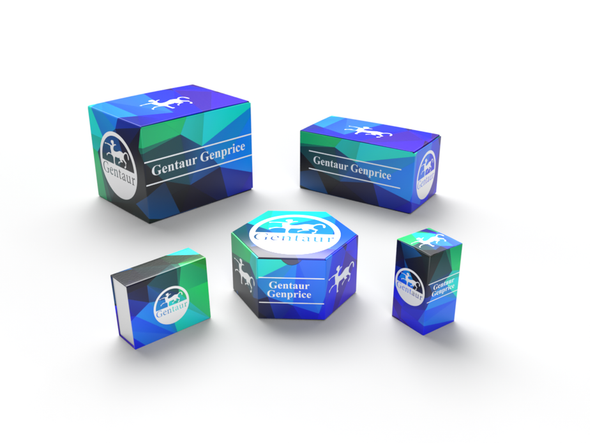749
Human Squalene monooxygenase (SQLE) ELISA Kit | KTE60353
- SKU:
- 749-KTE60353
- Availability:
- Usually ships in 5 working days
Description
Human Squalene monooxygenase (SQLE) ELISA Kit | KTE60353 | Gentaur UK, US & Europe Distribution
Application: This Human Squalene monooxygenase (SQLE) ELISA Kit employs a two-site sandwich ELISA to quantitate SQLE in samples. An antibody specific for SQLE has been pre-coated onto a microplate. Standards and samples are pipetted into the wells and anySQLE present is bound by the immobilized antibody. After removing any unbound substances, a biotin-conjugated antibody specific for SQLE is added to the wells. After washing, Streptavidin conjugated Horseradish Peroxidase (HRP) is added to the wells. Following a wash to remove any unbound avidin-enzyme reagent, a substrate solution is added to the wells and color develops in proportion to the amount of SQLE bound in the initial step. The color development is stopped and the intensity of the color is measured.
Detection Method: Colorimetric
Conjugate: N/A
Sample Type: Cell culture supernatants#Serum#Plasma#Other biological fluids
Assay Type: Multiple steps standard sandwich ELISA assay with a working time of 3-5 hours. It depends on the experience of the operation person.
Kit Component: • Human Squalene monooxygenase microplate
• Human Squalene monooxygenase standard
• Human Squalene monooxygenase detect antibody
• Streptavidin-HRP
• Standard diluent
• Assay buffer
• HRP substrate
• Stop solution
• Wash buffer
• Plate covers
Features & Benefits: Human Squalene monooxygenase (SQLE) ELISA Kit has high sensitivity and excellent specificity for detection of Human SQLE. No significant cross-reactivity or interference between Human SQLE and analogues was observed.
Calibration Range: Please inquire
Limit Of Detection: Please inquire
Usage Note: • Do not mix components from different kit lots or use reagents beyond the kit expiration date.
• Allow all reagents to warm to room temperature for at least 30 minutes before opening.
• Pre-rinse the pipet tip with reagent, use fresh pipet tips for each sample, standard and reagent to avoid contamination.
• Unused wells must be kept desiccated at 4 °C in the sealed bag provided.
• Mix Thoroughly is very important for the result. It is recommended using low frequency oscillator or slight hand shaking every 10 minutes.
• It is recommended that all samples and standards be assayed in duplicate or triplicate.
Storage Instruction: The unopened kit should be stored at 2 - 8°C. After opening, please store refer to protocols.
Shipping: Gel pack with blue ice.
Precaution The product listed herein is for research use only and is not intended for use in human or clinical diagnosis. Suggested applications of our products are not recommendations to use our products in violation of any patent or as a license. We cannot be responsible for patent infringements or other violations that may occur with the use of this product.
Background: Squalene epoxidase (EC 1.14.99.7) catalyzes the first oxygenation step in sterol biosynthesis and is thought to be one of the rate-limiting enzymes in this pathway. Squalene epoxidase (SE) is a key flavin adenine dinucleotide (FAD) -dependent enzyme of ergosterol and cholesterol biosynthetic pathways and an attractive potential target for drugs used to inhibit the growth of pathogenic fungi or to lower cholesterol level. By PCR analysis of a human/rodent somatic cell hybrid mapping panel, Nagai et al. (1997) demonstrated that the human SQLE gene maps to chromosome 8. The localization was refined by PCR analysis of a radiation hybrid panel. The results showed that human SQLE is most tightly linked to D8S508, which is reported to be located at 8q24.13-qter. The authors used fluorescence in situ hybridization to map SQLE to 8q24.1.
Alternative Names: SQLE; FLJ30795; squalene monooxygenase
Search name: SQLE; FLJ30795; squalene monooxygenase
Tag: SQLE






